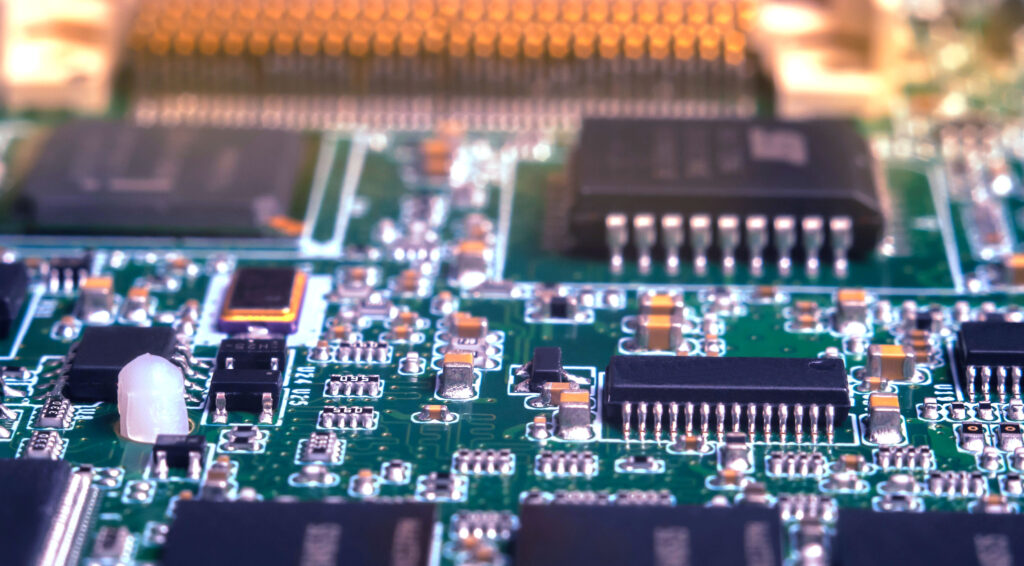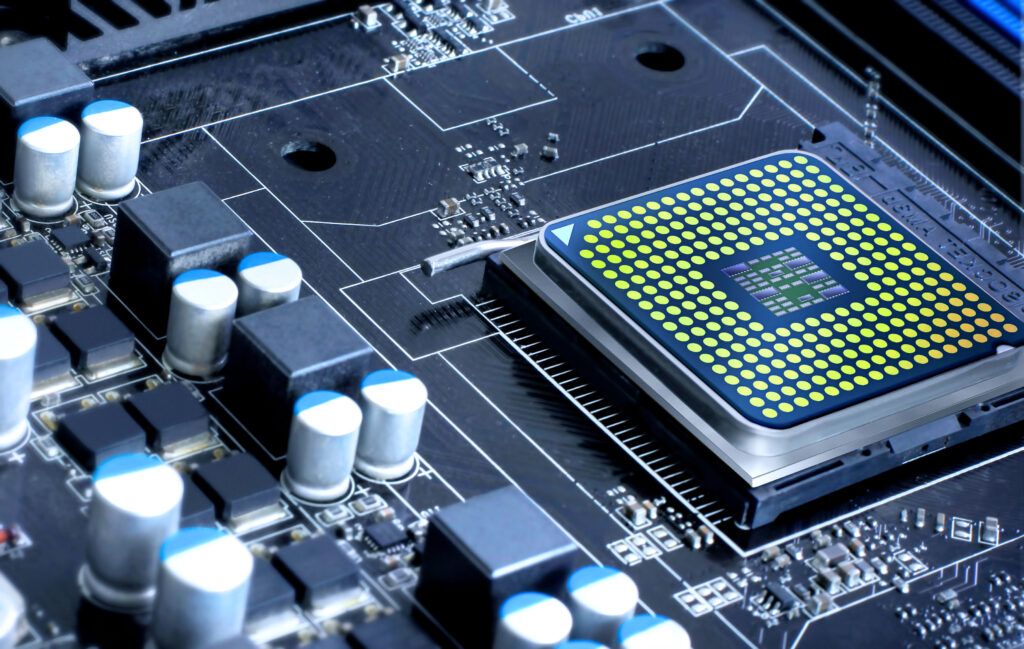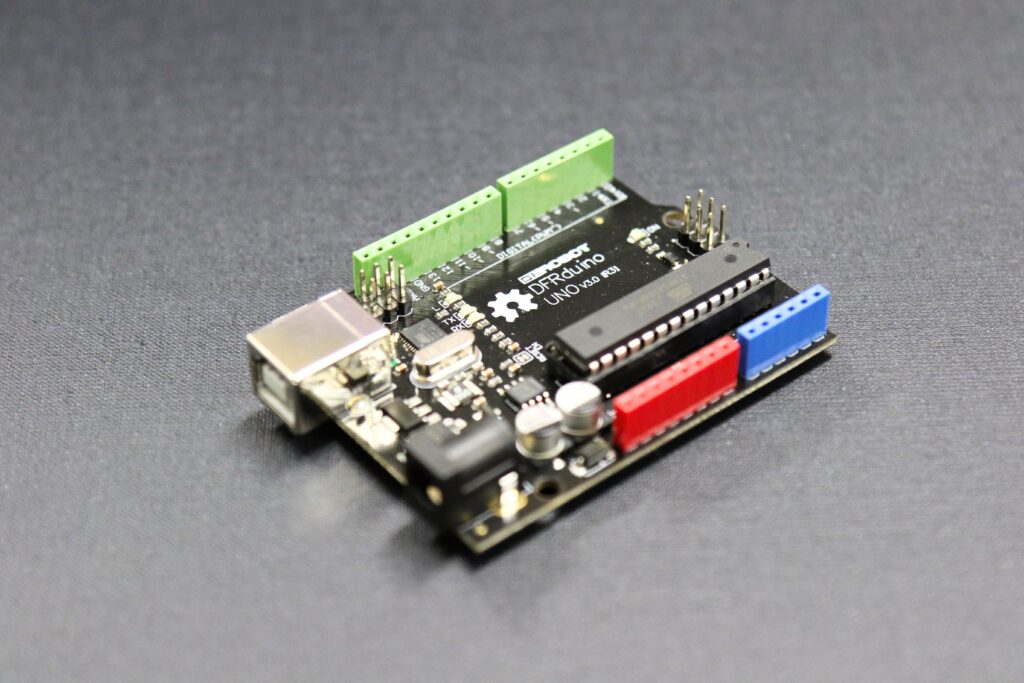Embedded systems are the backbone of modern electronics, enabling complex functionalities in a wide range of applications from consumer electronics to industrial automation. This article explores the intricate world of embedded system design, addressing its challenges, providing examples, and delving into advanced topics and architectures.
In this post, we talk about:👇
- Introduction to Embedded System Design
- What are the Challenges in Embedded System Design
- Embedded System Design Examples
- Embedded System Design Books
- Embedded System Design Architecture
- What is really an Embedded System Design?
- Advanced Embedded System Design
- ARM Based Embedded System Design
- Arduino Based Embedded System Design
- ET3491 Embedded System and IoT Design
- Embedded System Design Cycle
- Embedded Systems Design Companies
- Embedded Systems Design Consulting by Arshon Technology
- Concept of Embedded System Design
- Complex Embedded System Design
- Distributed Embedded System Design
- Embedded System Design Flow
- PID Controller C Code
- Conclusion:
Introduction to Embedded System Design
Embedded system design involves creating specialized computing systems that are part of larger mechanical or electrical systems. These systems are designed to perform dedicated functions, often with real-time computing constraints. Unlike general-purpose computers, embedded systems are optimized for specific tasks, making them highly efficient and reliable.

Embedded systems are found in a vast array of applications, including automotive control systems, medical devices, industrial machines, and consumer electronics. Each embedded system is designed to meet specific performance, cost, and power requirements, which are dictated by the target application. The design process involves a detailed analysis of these requirements and the selection of appropriate hardware and software components to fulfill them.
What are the Challenges in Embedded System Design
Designing embedded systems comes with its own set of challenges:
- Resource Constraints: Limited processing power, memory, and storage necessitate efficient use of resources. Designers must optimize software to run effectively on hardware with constrained resources.
- Real-time Performance: Ensuring timely and deterministic responses is critical in applications where delays can lead to failure or hazards, such as in medical devices or automotive systems.
- Power Efficiency: Many embedded systems operate on batteries or need to be highly energy-efficient. This requires careful design to minimize power consumption while maintaining performance.
- Security: Protecting against unauthorized access and attacks is crucial, especially for systems connected to networks. Security measures must be integrated at both hardware and software levels.
- Integration: Combining hardware and software seamlessly is essential for the system to function correctly. This involves detailed planning and testing to ensure compatibility and reliability.
To address these challenges, designers often use specialized tools and methodologies. For example, real-time operating systems (RTOS) are employed to manage tasks and ensure timely execution, while power management techniques such as dynamic voltage scaling can help reduce energy consumption.
Embedded System Design Examples
Embedded systems are ubiquitous, found in various applications such as:
- Automotive: Engine control units (ECUs), infotainment systems, advanced driver-assistance systems (ADAS), and electric vehicle battery management systems.
- Healthcare: Medical devices like pacemakers, insulin pumps, imaging systems, and portable monitors that require precise control and reliability.
- Consumer Electronics: Smartphones, smart TVs, wearables like fitness trackers, and smartwatches, which integrate multiple functions into compact devices.
- Industrial Automation: Robotics, process control systems, smart sensors, and industrial IoT devices that enhance efficiency and safety in manufacturing environments.
Each of these applications has specific requirements and constraints. For instance, automotive systems must operate reliably in harsh environments, while medical devices need to comply with stringent regulatory standards. Consumer electronics prioritize compactness and user experience, and industrial systems focus on robustness and real-time performance.
Embedded System Design Books
Several books provide comprehensive insights into embedded system design:
- Embedded Systems: Real-Time Interfacing to Arm Cortex-M Microcontrollers” by Jonathan Valvano offers practical guidance on interfacing and real-time systems.
- Designing Embedded Systems with PIC Microcontrollers” by Tim Wilmshurst covers the design process using PIC microcontrollers, a popular choice for many applications.
- Embedded System Design: A Unified Hardware/Software Introduction” by Frank Vahid and Tony Givargis provides a holistic view of embedded system design, integrating both hardware and software perspectives.
- The Art of Designing Embedded Systems” by Jack Ganssle explores best practices and design techniques from an industry veteran’s perspective.
- “Embedded Systems Architecture: Explore architectural techniques, pragmatic design patterns, and best practices” by Tammy Noergaard offers in-depth coverage of embedded system architectures.
These books are invaluable resources for both beginners and experienced designers, providing theoretical foundations, practical examples, and industry insights.
Embedded System Design Architecture
The architecture of an embedded system typically includes:
- Microcontroller or Microprocessor: The brain of the system, executing instructions and controlling peripherals. The choice between a microcontroller (MCU) and a microprocessor (MPU) depends on the application’s complexity and performance requirements.
- Memory: ROM for storing firmware and RAM for temporary data storage. Non-volatile memory such as Flash is often used for firmware updates.
- Peripherals: Input/Output interfaces, timers, communication modules (such as UART, SPI, I2C), and sensors. These components interface with the external environment and enable the system to perform its functions.
- Power Supply: Ensures the system operates within required voltage and current ranges. Power management ICs (PMICs) are used to regulate and distribute power efficiently.
- Communication Interfaces: For connectivity, embedded systems may include wired interfaces like Ethernet and USB, or wireless interfaces like Bluetooth, Wi-Fi, and Zigbee.

The design of the architecture involves selecting and integrating these components to meet the application’s requirements. This process includes defining the system’s hardware-software interface, developing firmware, and ensuring that all components work together seamlessly.
What is really an Embedded System Design?
Embedded system design is the process of defining, developing, and deploying embedded systems. It involves hardware design, firmware development, system integration, and testing to meet specific functional requirements and constraints.
The design process typically follows these steps:
- Requirement Analysis: Understanding and documenting the functional and non-functional requirements of the system.
- System Design: Creating a high-level design that defines the system’s architecture, including hardware and software components.
- Component Selection: Choosing the appropriate microcontroller, memory, peripherals, and other components based on the design requirements.
- Schematic Design: Developing detailed schematics that define the electrical connections between components.
- PCB Layout: Designing the printed circuit board (PCB) to house the components, considering factors like signal integrity, thermal management, and manufacturability.
- Firmware Development: Writing the software that runs on the microcontroller, including drivers, application code, and real-time operating systems if needed.
- Prototyping: Building a prototype to validate the design and make any necessary adjustments.
- Testing and Validation: Conducting thorough testing to ensure the system meets its specifications and performs reliably.
- Manufacturing: Producing the final system at scale, ensuring quality control and compliance with industry standards.
Advanced Embedded System Design
Advanced embedded system design incorporates cutting-edge technologies and methodologies:
- Multi-core Processing: Enhancing performance by parallel processing. Multi-core processors allow for concurrent execution of multiple tasks, improving overall system responsiveness.
- Artificial Intelligence: Integrating AI and machine learning for smarter functionalities. For example, AI can be used for predictive maintenance in industrial systems or for advanced image processing in medical devices.
- Internet of Things (IoT): Connecting devices for data exchange and remote control. IoT-enabled embedded systems can communicate with cloud services and other devices, enabling new applications like smart homes and industrial automation.
- Low-Power Design: Techniques like dynamic voltage scaling, power gating, and energy harvesting to extend battery life. Low-power design is critical for battery-operated devices and applications where power availability is limited.

Advanced design techniques also involve the use of sophisticated development tools and frameworks. Model-based design, for example, allows designers to create and simulate system models before implementing them in hardware. This approach can significantly reduce development time and improve system reliability.
ARM Based Embedded System Design
ARM architecture is prevalent in embedded systems due to its power efficiency and performance:
- ARM Cortex-M Series: Widely used in microcontrollers for low-power applications, such as wearables and sensor nodes. The Cortex-M series offers a range of cores with different performance levels, from the ultra-low-power Cortex-M0+ to the high-performance Cortex-M7.
- ARM Cortex-A Series: Suitable for high-performance applications like smartphones, tablets, and automotive infotainment systems. The Cortex-A series supports features like multi-core processing, advanced graphics, and high-speed connectivity.
- Development Tools: ARM provides a suite of development tools, including compilers, debuggers, and simulation environments. These tools support the entire development lifecycle, from code writing and debugging to performance optimization and deployment.
ARM-based designs benefit from a vast ecosystem of hardware and software solutions. The availability of development boards, software libraries, and middleware simplifies the design process and accelerates time-to-market.
Arduino Based Embedded System Design
Arduino platforms make embedded system design accessible to beginners and hobbyists:
- Open-source Hardware: Affordable and versatile development boards, such as the Arduino Uno, Mega, and Nano. These boards come with built-in peripherals and connectors, making it easy to prototype and experiment with different designs.
- Programming Environment: Easy-to-use integrated development environment (IDE) with extensive libraries. The Arduino IDE simplifies coding and provides a wide range of pre-written libraries for tasks like sensor interfacing, communication, and control.
- Community Support: Large online community offering tutorials, projects, and troubleshooting. The Arduino community is a valuable resource for learning, sharing ideas, and solving problems.

Arduino’s simplicity and flexibility make it an ideal platform for rapid prototyping and education. It allows designers to quickly test concepts and iterate on their designs before moving to more advanced platforms.
ET3491 Embedded System and IoT Design
The ET3491 course focuses on the intersection of embedded systems and IoT:
- Curriculum: Covers sensor integration, wireless communication, and IoT protocols. Students learn how to design systems that collect data from sensors, process it, and transmit it over networks.
- Projects: Hands-on projects involving real-world IoT applications. These projects provide practical experience in designing, building, and testing IoT-enabled embedded systems.
- Skills Development: Equips students with the skills to design and implement IoT-enabled embedded systems. Topics include embedded programming, network protocols, cloud integration, and cybersecurity.
The course prepares students for careers in the rapidly growing field of IoT, where embedded systems play a crucial role. It emphasizes both theoretical knowledge and practical skills, ensuring that graduates are ready to tackle real-world challenges.
Embedded System Design Cycle
The design cycle of an embedded system includes:
- Requirement Analysis: Defining functional and non-functional requirements. This step involves gathering input from stakeholders, understanding user needs, and documenting specifications.
- System Design: Creating hardware and software architectures. The design phase involves selecting components, defining interfaces, and planning the system’s overall structure.
- Implementation: Developing and integrating hardware and software components. This includes writing firmware, assembling hardware, and integrating all components to create a working system.
- Testing: Verifying functionality, performance, and reliability. Testing involves checking that the system meets its requirements and performs as expected under various conditions.
- Deployment: Installing and maintaining the system in its operational environment. Deployment includes tasks like setting up the system, training users, and providing ongoing support and maintenance.
Effective project management and collaboration are essential throughout the design cycle. Tools like version control systems, issue trackers, and continuous integration platforms help teams stay organized and ensure high-quality outcomes.
Embedded Systems Design Companies
Several companies specialize in embedded systems design:
- ARM Holdings: Leading provider of microprocessor IP. ARM’s architecture is used in a wide range of embedded systems, from simple microcontrollers to advanced application processors.
- Microchip Technology: Offers microcontrollers, analog, and flash-IP solutions. Microchip’s products are used in applications ranging from automotive to industrial control and consumer electronics.
- Texas Instruments: Provides a wide range of embedded processors and development tools. TI’s portfolio includes microcontrollers, processors, and analog components for various industries.
- STMicroelectronics: Known for its microcontrollers and sensors. ST’s products are used in applications such as IoT, automotive, industrial automation, and consumer electronics.
- NXP Semiconductors: Offers a range of microcontrollers, processors, and connectivity solutions. NXP’s products are widely used in automotive, industrial, and consumer applications.
- Renesas Electronics: Specializes in microcontrollers and SoC solutions for automotive, industrial, and consumer markets. Renesas’ products are known for their reliability and performance.
These companies provide not only hardware but also development tools, software libraries, and technical support. Their comprehensive ecosystems help designers develop and deploy embedded systems more efficiently.
Embedded Systems Design Consulting by Arshon Technology
Arshon Technology services offer expertise in embedded systems design:
- Custom Solutions: Tailored designs to meet specific client needs. Arshon Technology works closely with clients to understand their requirements and develop custom solutions that address their unique challenges.
- Project Management: Overseeing development from concept to deployment. Arshon Technology can manage the entire development process, ensuring that projects stay on schedule and within budget.
- Optimization: Enhancing performance, power efficiency, and reliability. At Arshon Technology services include performance tuning, power optimization, and reliability testing to ensure that systems meet client goals.
Arshon Technology, an embedded systems design consulting firm brings a wealth of experience and expertise to projects, helping clients navigate complex design challenges and achieve their objectives.
Concept of Embedded System Design
The core concept of embedded system design is creating specialized systems optimized for specific tasks. This involves balancing trade-offs between performance, power consumption, cost, and reliability to achieve the desired functionality within constraints.
Key principles of embedded system design include:
- Optimization: Ensuring that the system performs efficiently within resource constraints. This may involve optimizing code, selecting the right components, and fine-tuning the system’s performance.
- Integration: Seamlessly integrating hardware and software components. The design process involves ensuring that all components work together harmoniously and meet the system’s requirements.
- Scalability: Designing systems that can be scaled or adapted for different applications. Scalability may involve using modular components, designing for future upgrades, or supporting multiple configurations.
- Reliability: Ensuring that the system operates reliably under all expected conditions. This includes designing for robustness, conducting thorough testing, and implementing fault-tolerant mechanisms.
- Maintainability: Designing systems that are easy to maintain and update. This may involve using standard interfaces, providing documentation, and designing for easy access and serviceability.
By adhering to these principles, designers can create embedded systems that meet the needs of their applications and provide reliable, efficient, and cost-effective solutions.
Complex Embedded System Design
Complex embedded systems involve intricate designs and advanced features:
- Multifunctional Devices: Combining multiple functionalities in a single system. For example, a modern smartphone integrates communication, computing, and multimedia capabilities in a compact form factor.
- Real-time Operating Systems (RTOS): Managing tasks and resources in real-time applications. RTOSes provide deterministic scheduling and support for concurrent tasks, making them essential for time-sensitive applications.
- High-speed Interfaces: Supporting fast data transfer and processing. High-speed interfaces like USB 3.0, PCIe, and HDMI are used in applications that require rapid data exchange and high-performance computing.
- Advanced Security: Implementing robust security measures to protect against threats. This includes hardware-based security features, secure boot processes, and encryption to safeguard data and ensure system integrity.
Designing complex embedded systems requires a deep understanding of both hardware and software, as well as expertise in system integration and optimization. It also involves the use of sophisticated tools and methodologies to manage the increased complexity and ensure that all components work together seamlessly.
Distributed Embedded System Design
Distributed embedded systems consist of multiple interconnected devices working together:
- Networked Systems: Devices communicate over networks like CAN, Ethernet, or wireless protocols. Distributed systems often use communication protocols to exchange data and coordinate actions between nodes.
- Distributed Control: Control logic distributed across multiple nodes. In a distributed control system, each node may perform specific tasks, and the overall system behavior emerges from the interaction of these nodes.
- Scalability: Systems can be scaled by adding or upgrading nodes. Distributed systems are inherently scalable, allowing designers to add new nodes or upgrade existing ones to meet changing requirements.
- Redundancy and Fault Tolerance: Enhancing reliability by distributing functionality across multiple nodes. Distributed systems can be designed to tolerate faults by providing redundant paths and components.
Distributed embedded systems are used in applications like industrial automation, where multiple sensors, actuators, and controllers work together to manage complex processes. They are also used in automotive systems, smart grids, and IoT applications, where devices need to collaborate and share data.
Embedded System Design Flow
The design flow for embedded systems involves:
- Specification: Defining system requirements and constraints. This step involves gathering input from stakeholders, understanding user needs, and documenting specifications.
- Modeling: Creating abstract models to simulate and analyze the system. Modeling tools like MATLAB/Simulink allow designers to explore different design options and predict system behavior.
- Design: Detailed design of hardware and software components. The design phase involves selecting components, defining interfaces, and planning the system’s overall structure.
- Verification: Ensuring the design meets specifications through testing and validation. Verification involves checking that the system meets its requirements and performs as expected under various conditions.
- Implementation: Building and integrating the system. Implementation includes tasks like writing firmware, assembling hardware, and integrating all components to create a working system.
- Deployment: Installing the system in its operational environment. Deployment includes tasks like setting up the system, training users, and providing ongoing support and maintenance.
Effective project management and collaboration are essential throughout the design flow. Tools like version control systems, issue trackers, and continuous integration platforms help teams stay organized and ensure high-quality outcomes.
PID Controller C Code
Embedded systems often use PID controllers for precise control. Below is an example of PID controller implementation in C:
#include <stdio.h>
double Kp = 1.5, Ki = 0.1, Kd = 0.01;
double setpoint = 100;
double integral = 0, previous_error = 0;
double PID_Controller(double process_variable) {
double error = setpoint - process_variable;
integral += error;
double derivative = error - previous_error;
previous_error = error;
return (Kp * error) + (Ki * integral) + (Kd * derivative);
}
int main() {
double process_variable = 90;
double control_output = PID_Controller(process_variable);
printf("Control Output: %f\n", control_output);
return 0;
}This code demonstrates the basic principles of a PID controller, where the error is calculated, and the proportional, integral, and derivative terms are used to compute the control output. PID controllers are widely used in embedded systems for tasks like motor control, temperature regulation, and process control.
Conclusion:
In conclusion, embedded system design is a multifaceted field that combines hardware and software engineering to create specialized, efficient, and reliable systems. Understanding the principles, challenges, and advancements in this field is crucial for developing the next generation of embedded systems that power our modern world.
By exploring various aspects of embedded system design, from basic concepts to advanced techniques, this article provides a comprehensive overview of the field. Whether you are a beginner looking to get started or an experienced designer seeking to deepen your knowledge, the insights and information presented here will help you navigate the complexities of embedded system design and contribute to the development of innovative solutions.
